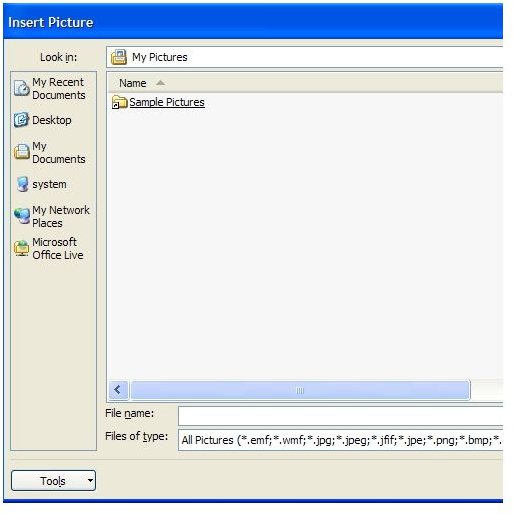How to Insert a PNG File into PowerPoint 2007 Presentations
Image Formats and PowerPoint
PowerPoint 2007 is a powerful presentation program that allows a great deal of flexibility to create and display electronic slides. One aspect of this flexibility is PowerPoint’s compatibility with a wide range of file formats for insertion into your slide show presentation.
Among a long list of compatible image formats including JPG, GIF, and BMP, one file format is largely overlooked when creating slide shows in PowerPoint. Portable Network Graphics (PNG) image files are flexible and efficient at displaying pictures. They are an excellent balance between quality and portability much like the older GIF file format. Read on to learn the benefits of using PNG files in PowerPoint and a brief tutorial on inserting a PNG into your presentation.
What are PNG Image Files?
Since there are already a number of image file formats available, some people ask why another one like PNG is even necessary. One of the problems with file formats is that they are not always available to the public domain. To be specific, the algorithms to create file formats are patentable, typically meaning that the patent holder must be paid if the algorithm is used in a program.
Compuserve, a popular networking company that competed in the online subscriptions with Prodigy and other online service companies, created the Graphics Interchange Format (GIF) in 1987. Through a series of buyouts and other business deals, Unisys owns the GIF algorithm today.
One of the advantages of the GIF format was the ability to define transparent areas on an image. GIFs could also be used to rotate a series of images to create the appearance of a small movie file. These features are rarely found in one image format even today. For these reason alone, the GIF format dominated the early days of the web.
The purpose of a PNG file was to create an image format that could compete with the proprietary GIF format and provide a lossless data compression image whose sole purpose was for distribution on the web and over other networks. The result is a powerful, flexible, and efficient image file that is well suited for use in PowerPoint, a program whose output is normally viewed on a computer screen or through a projector in front of multiple people.
Inserting PNG Image Files into PowerPoint 2007
Luckily, inserting PNG files into your PowerPoint presentation requires no special procedure or attention. To begin, click on the INSERT PowerPoint Ribbon and then click on the PICTURE icon (see Figure 1). When the INSERT PICTURE window opens (see Figure 2), locate the PNG file you want to insert into PowerPoint and click the INSERT button.
You have now inserted your PNG file into PowerPoint. From here you can manipulate, move, or resize the image just as you can with other image formats such as JPG, GIF, and BMP. For advanced users, PNG files support transparency like GIF files. Transparent areas in a PNG file may be specified by pixel or by the use of alpha channels.
Using transparency, you can create some interesting effects in PowerPoint. For example, by using transparent images, you can create a layering effect that visually describes some business process, organizational chart, or any other information where development of images in front of an audience in real time helps convey your message.

PNG files also create far fewer artifacts than the more popular JPG image format. Artifacts are a byproduct of the compression process. Since JPG uses a lossy data compressions algorithm, artifacting is one of its byproducts.
PNG files are, therefore, well suited to images that contain text, line art, and other high-contrast imagery. The JPG format was largely created for photographic images and is actually a better choice when you need to display high-quality photographs in your PowerPoint presentations. PNG files do tend to be quite a bit larger than JPG files so if space is a major consideration, stick with JPG.
Conclusion
The PNG format was created to compete directly with the web’s most popular proprietary image format, the GIF. Supporting multiple types of transparency, PNG files are well suited to display on web pages, in PowerPoint presentations, or anywhere the main viewing device is a computer monitor or projector. As an alternative to the JPG format, PNG files are best used when sharp imagery is needed such as when displaying text within an image, line art, or in other types of high-contrast images.
